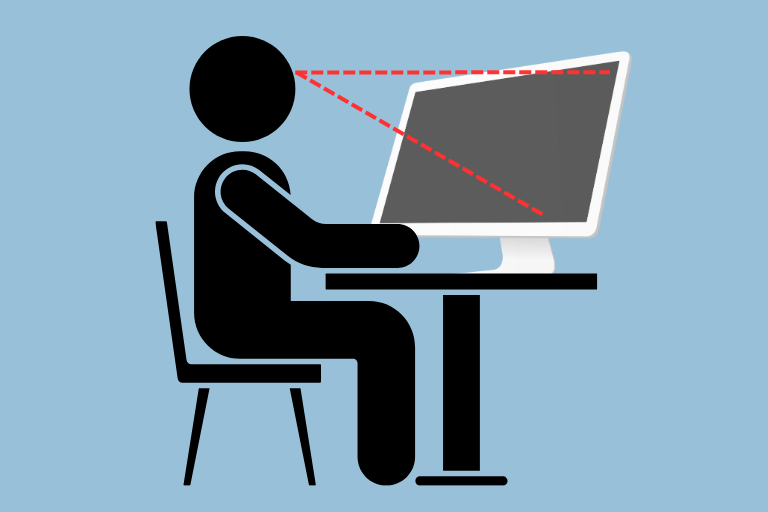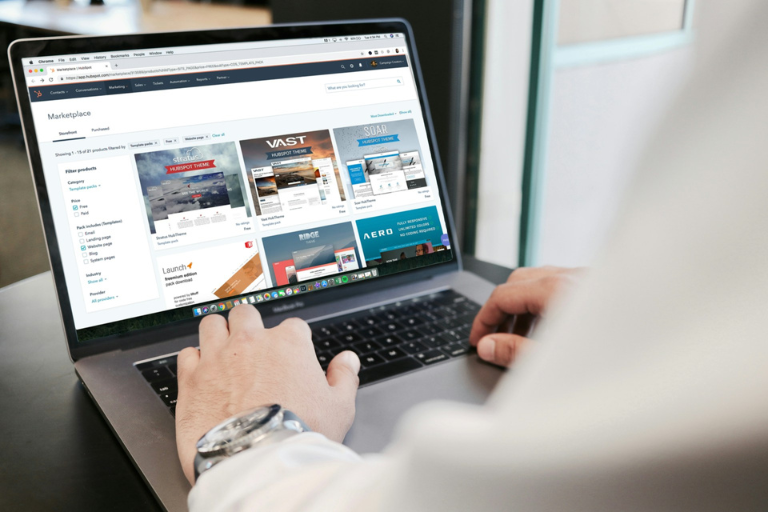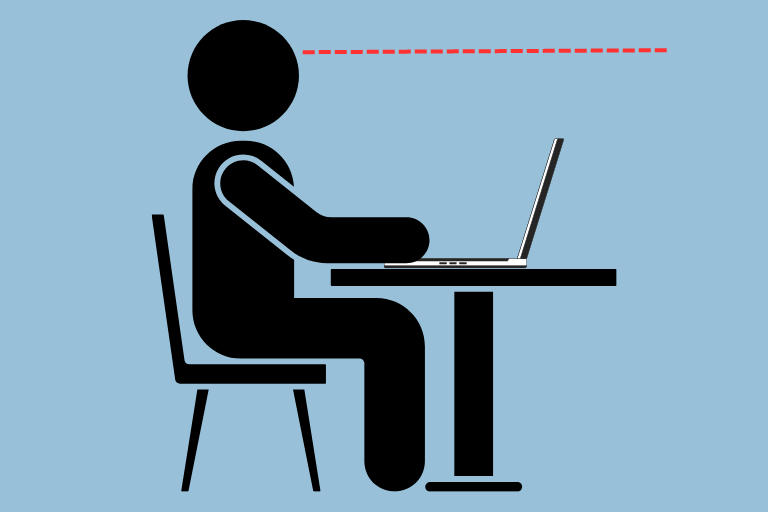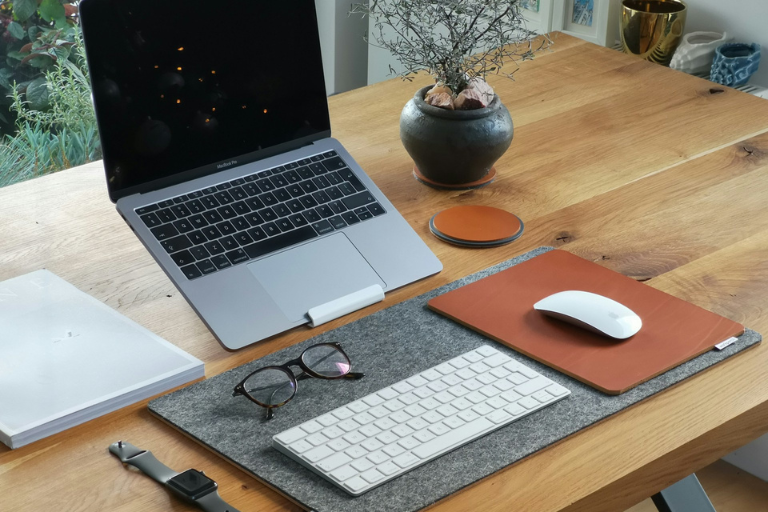As someone who’s spent many hours hunched over a laptop, I know how crucial proper positioning can be. Today, we’re diving into the question: should your laptop be at eye level? We’re about to explore laptop ergonomics and potentially save your neck – literally!
Also read our post on how to use a laptop stand if you want answers to more laptop stand questions and set up tips.
Table of Contents
Should Laptop Be at Eye Level?
Let’s go straight to the point. Should your laptop be at eye level? Well, your eyes should be at the top of your screen, or slightly above so that you have to look down a bit to see the middle of the screen.
Optimaly your screen should be placed between your line of sight and thirty degrees below.

This will be healthy for your eyes, back, and neck so that you can work for longer without any pain. With this positioning, you’ll minimize the need for looking up and down excessively.
Why Proper Laptop Placement Matters
Having your laptop in the best height can be extremely important for you and your work. You’ll probably be able to work longer periods without getting exhausted and avoid common office pains such as neck and back strain, and eye strain, plus headaches.

If your work involves sitting at a computer for hours per day you should absolutely think about your posture.
Think about the total time you’ll spend in that position over a couple of years and the rest of your lifetime. You can probably see how much good a proper posture would do for you.
Ideal Laptop Positioning Technique
Start by sitting in your chair at your desk with your feet flat on the ground and your knees 90 degrees bent. Sit straight up with your back and neck, and look straight ahead. The top of your laptop screen should be in line with where you looked or slightly below.

If you did this you’ll realize that your laptop screen is way below this line and you need to raise your laptop to eye level somehow. Use the tools talked about in this next section of the article.
Essential Tools for Ergonomic Laptop Use
To use your laptop most ergonomically and healthily for your body you need some tools.
Laptop stands
A laptop stand is the most important and obvious of them all. A laptop stand, laptop riser, or laptop holder, whatever you want to call it can rise your laptop to the optimal height. Read our article on how to choose a laptop stand if you’re considering buying one for yourself.

There are many different variants of laptop stands but our guide on how to use a laptop stand will help you get going and set up your stand fast. It isn’t complicated at all with most laptop stands.
You can also try some DIY solutions to keeping your laptop at eye level. Try stacking a few books under your laptop or building yourself a laptop stand with scrap wood.

A couple of years ago I used to have like five books under my laptop to keep it at a good height and it worked pretty well. At the same time I want to make it clear that a laptop stand is much better to use if you can afford it.
External keyboards and mice
When elevating your laptop ergonomics with either a laptop stand or a DIY solution such as placing books under the laptop you might need an external keyboard and mouse.

It’s good to have a keyboard on your desk so that you can keep you arms 90 degrees bent while writing. This is best for ergonomics.
Adjustable desks
An adjustable desk can offer both standing and sitting work. This means you can work sitting down for a bit, then switching to standing when you feel like it. If you’re not going to use a keyboard with your laptop you could rise the desk so that you get the proper laptop height for veiwing. If you do this your keyboard will be too high up for you to write on.

Should Laptop Be at Eye Level? – Conclusion
The top of your laptop screen should be at eye level or slightly below. Remember, the goal is to find a setup that keeps your neck in a neutral position and minimizes strain. Whether you opt for a laptop stand or a complete workstation overhaul, your body will thank you for taking the time to get it right.
FAQ
Q1: What are the risks of having my laptop too low or too high?
A: If your laptop is too low, you may experience neck and upper back pain from bending your head down. If it’s too high, you might strain your neck by tilting it back and potentially experience eye strain from looking up constantly.
Q2: Do I need a laptop stand to achieve proper ergonomics?
A: While not absolutely necessary, a laptop stand can be very helpful in achieving proper ergonomics. It allows you to raise your screen to the right height while using an external keyboard and mouse at a comfortable level.
Q3: Can using a laptop at eye level cause neck pain?
A: Having your laptop exactly at eye level can potentially cause neck pain if it forces you to tilt your head back slightly. A slight downward gaze is generally more comfortable for extended periods.
Q4: What’s the difference in ergonomics between laptops and desktop monitors?
A: Desktop monitors are typically easier to position at the correct height and distance. With laptops, you often need to compromise between ideal screen position and keyboard height unless you use external peripherals.
Q5: Is it okay to use a laptop on my lap, or should it always be on a desk?
A: While occasional lap use is okay, it’s best to use your laptop on a desk or table for extended periods. Lap use often leads to poor posture and can cause heat-related discomfort.
Q6: How do I maintain good posture while using a laptop?
A: Sit with your feet flat on the floor, knees at a 90-degree angle, back straight, and shoulders relaxed. Keep your elbows close to your body and wrists straight while typing.
Q7: Are there any exercises I can do to counteract the effects of prolonged laptop use?
A: Yes, neck rolls, shoulder shrugs, wrist stretches, and periodic standing and walking can help. Also, try eye exercises like focusing on distant objects to reduce eye strain.
